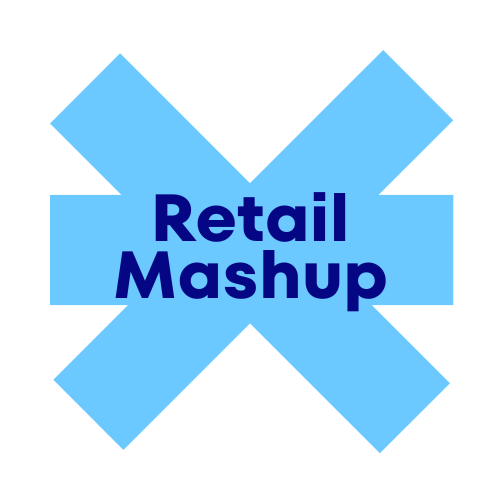DeAnn shares how recent retail and purchasing trends are pushing shoppers into permanent behavioral changes in their buying habits.
Table of Contents
Introduction – Retail Environment
When it comes to how cities serve their citizens, success is a long game. It takes years (and even decades) to shift a city to accommodate changes in how we live, and that’s precisely why city planners, businesses, and real estate agents alike are closely watching recent trends surrounding how and where we live, work and shop.
We’re now well-versed in the COVID-safe behaviors that get us through a typical week. Working from home, outdoor dining, and online groceries now feel familiar. We value the convenience they impart — so much so that the new behaviors arising from safety measures have become an expectation that’s pushing permanent change onto cities and businesses.
Remote Work
One of the most impactful, far-reaching trends is the shift to remote work. As our remote workforce grows, the resulting changes threaten to reshape every aspect of city design as well as core business operations for everyone.
In fact, the growing acceptance of this remote work setup has altered the daily habits of a massive U.S. consumer group: white-collar workers. Even when splitting workweeks between homes and offices, the lack of regular daily commuters has sent shockwaves through cities and industries alike — and retailers who built businesses around serving office workers are seeing dramatic revenue drops.
In July 2021, for instance, Starbucks reported its first quarterly loss in seven years and projected a 10-20 percent decline in same-store sales for 2020 — even though 95 percent of its U.S. stores reopened post-lockdown. The restaurants, dry cleaners, fuel centers, and other businesses created to serve commuters and lunchtime office traffic have a desperate need to reinvent. Many won’t survive, as shopping and services have moved online with physical fulfillment at (or closer to) home.
Simultaneously, remote employment has uncoupled workers from designated locales, fueling a newfound interest in relocation. Headlines would have us believing that massive waves of people are fleeing cities thanks to remote work opportunities (and perhaps a need to avoid COVID-19 hot spots). However, 2020 real estate search data from Zillow shows that the total percentage of pageviews for suburban properties actually fell 0.4 percent, while urban properties’ pageviews rose 0.2 percent year over year. In other words, viewing patterns stayed almost the same as those of 2019.
Redistribution Between Cities
In fact, the real story is about redistribution between cities rather than migration toward the outskirts. Real estate data shows population downsizing in America’s largest metros (like New York and San Francisco) as more people relocate to secondary cities like Austin, Texas, and Atlanta. But once the thrill of plentiful parking and friendly neighbors has waned, there will be new consequences to navigate. An influx of residents will place significant stress on secondary cities as sudden growth strains existing services, adds traffic, and raises home prices long before the benefit of additional taxpayers.
Similarly, moving to a smaller city often brings the expectation of big-city services (think 24-hour grocery stores, late-night drive-thrus, and same-day delivery for online orders). As more consumers push for these services, businesses will feel compelled to respond. Increases in retail operations and the impact on cities from delivery traffic will bring construction and congestion, requiring tax and price increases to fund solutions. And all cities will see a demand for walkability, local parks, and safe community retail. In short, small cities are at risk of becoming big cities — but without the time to adapt.
The fallout from remote work will drive changes in big cities as well. As COVID-19 repositions daily living closer to our “local bubbles,” retailers are already rethinking how to serve their customers. 2020’s surge in online shopping has led to more than 15,000 store closures across the retail industry and inspired large retailers to reposition their business around community-based stores that support online orders and quick delivery.
Store Vacancies
Increased store vacancies are also dropping big-city rents, allowing retailers to explore pop-up and temporary store strategies to test new markets and move quickly to stay close to customers. The good news is that these vacancies will offer big cities the opportunity to convert crowded office and retail space into green spaces and multipurpose hubs — but the bad news is that they’ll be challenged to pay for it.
From a planning vantage, these trends translate into two seemingly contradictory behaviors: the urge to stay closer to home and the desire for worthwhile socialization. These behaviors reveal the need for companies, cities, and retailers to reinvent around a disbursed network model.
What’s Next
“Disbursement” will be a top focus for cities and businesses for years to come. Companies must cast a broader network of small workspace hubs to manage and support the remote workforce, and cities will need to create myriad neighborhood green spaces (in lieu of larger destination parks), offer cleaner transportation options, and support local spaces with outdoor areas for shops and services.
Communities will demand nearby spaces for centralized services (such as test or study centers for online students and outdoor gyms). And retailers will need to form partnerships to help each other defray the cost of supporting consumer demand for both multichannel convenience and hyperlocal brick-and-mortar experiences.
As these trends take root in our daily lives and form permanent changes in what we require from cities and businesses, enormous challenges must be addressed to rebuild our surroundings. Likewise, old cities must evolve to support decidedly new lifestyles.
Note: This insight was first published on Total Retail on June 15, 2021 as “Shifting Sands: How Recent Trends Are Fueling Permanent Change for Shoppers and Cities” Retail Mashup added an introduction, headings, minor date additions, and pictures to enhance clarity.
Follow this link for more information about the Retail Mashup content platform
Follow this link for more podcast episodes
Follow this link to participate in weekly polls








